An insight into development of March of the Lich King’s Death Knight class from Hearthstone’s designers
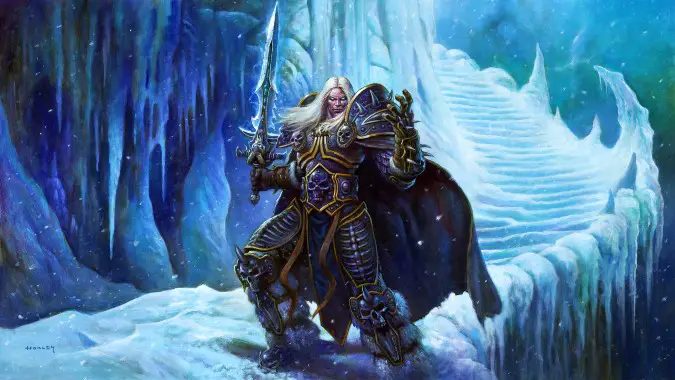
We had the opportunity to sit down with Hearthstone Features Lead Chadd Nervig (aka Celestalon) and Initial Design Lead Cora Georgiou to chat about the upcoming March of the Lich King expansion. This time around, the star of the show is — of course — the new Death Knight class, by far the most complex class ever added to Hearthstone.
A lot was shared about the process of developing this class and all the intricacies of its features, such as the Rune system, the Corpse mechanic, and its Hero Power. So let’s march ahead and grasp it all in the name of the Lich King!
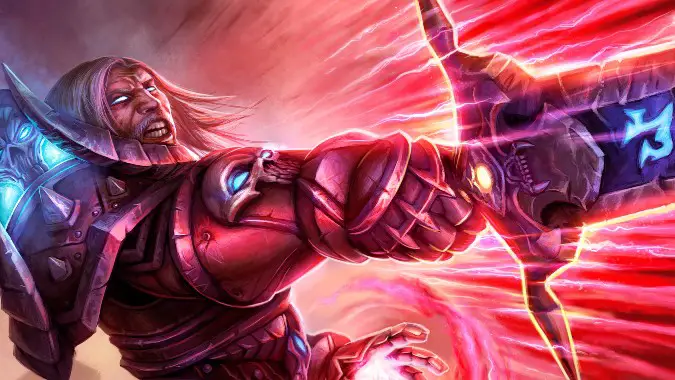
How developing Death Knights was different from Demon Hunters
When developing the first new class introduced to Hearthstone, Demon Hunters, in 2020, the team ran into several time constraints. In order to avoid those problems now with Death Knights, a few members of the team — namely, Chadd and current Battlegrounds Lead Designer John McIntyre — actually started developing the class several weeks early, while Murder at Castle Nathria was still in development.
That head start allowed them to prototype gameplay ideas and refine them, and made the process much smoother once the entire team started to work on them. Most of the time was spent trying to get the Death Knight hero power, Ghoul Charge, “right” — which means, at the appropriate power level, while also fitting with the flavor and design of the Death Knight class.
Another big difference was the fact that Demon Hunters were added during the beginning of the year, right at rotation time, long before the meta was consolidated — which made them a little too strong, since all the classes were still changing, and there was no clear picture of their power level yet. With Death Knights, this was avoided by adding the class during the final expansion of the year — the high point of what the team knows about the meta, allowing them to much more accurately predict how the class will fit the meta, and how it will develop.
Another aspect was simply adding more cards: Death Knights are launching with 50% more cards than Demon Hunters did. So if certain cards are underpowered, they can avoid having entire archetypes fall apart.
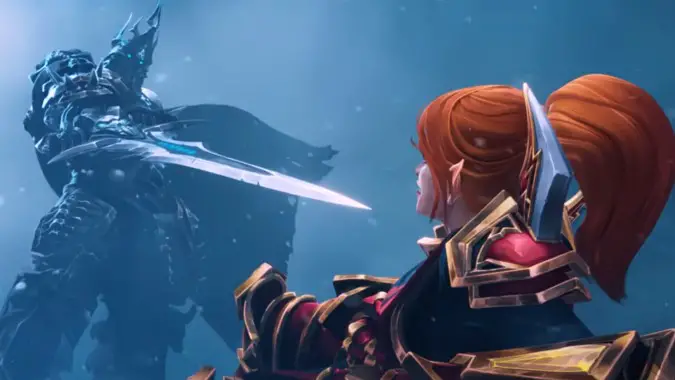
The Rune System makes Death Knights “three classes in one”
The Rune System divides the Death Knight class into three big archetypes — Blood, Frost, and Unholy are almost like three classes, mostly separate from one another. This opens up an entire new perspective for building decks for the class, and borrows heavily from the World of Warcraft fantasy of class specializations.
The idea of doing specializations for other classes, like DKs are getting with their runes, was discussed by the developers — but since existing classes already have established ways of getting that fantasy, there are no plans to do that at this time. DKs were developed from the start with the Rune system in mind, while other classes weren’t. It would be very complicated to “redo” all those classes to fit the same mold.
The truth is that Death Knights are simply more complex than the other classes. There’s this expectation that the game is different now from how it was eight years ago, so stepping things up a bit is “okay,” if done with moderation, says Celestalon. DKs can be a more advanced class, though there are measures to allow new players to catch up to it — such as the brand-new tutorial, and the ability to copy and paste deck codes, getting a transparent experience.
As a consequence of that complexity, Death Knights have a larger collection of cards than the others — again, it’s essentially three classes in one. This complexity isn’t just to make things more complicated for no reason: the goal is to get more depth out of the gameplay as well.
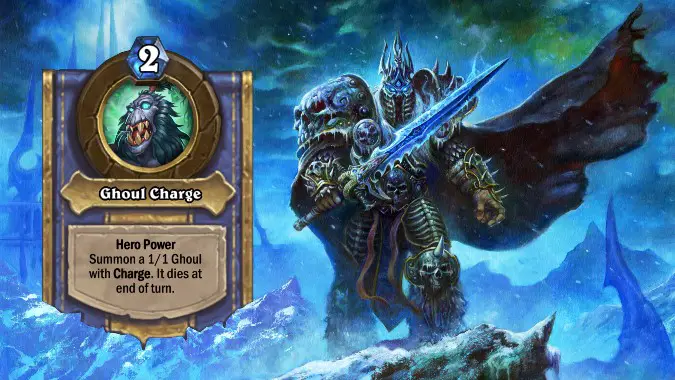
The Death Knight Hero Power has multiple layers to it
Although the DK hero power may seem similar to the Paladin hero power at first, there are some key differences. The 1/1 Ghoul that is summoned dies at the end of the turn, but it has Charge, so while players aren’t exactly “encouraged” to look for ways to buff it, and make it go face — the Death Knight will be a class that struggles with buffing effects — if they can do that, it’s another strategic option they have.
But one key feature about the Ghoul is that it generates a Corpse for you when it dies. So it’s a vital part of generating that resource, and allowing you to use your cards that consume it. In the end of the day, although both the Death Knight and the Paladin hero powers summon 1/1 minions, they’ll end up being used very differently — though the fact that Arthas starts out as a Paladin and ends up as the Lich King is a really nice thematic connection.
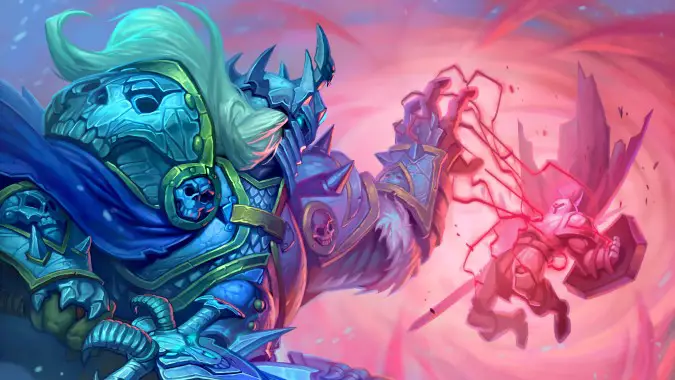
The Corpse mechanic introduces a new type of resource management to the game
The Corpse mechanic was inspired by an earlier version of the Infuse mechanic from Murder at Castle Nathria. Cora explains that the team will often do that: as they’re iterating on a mechanic, some idea might not work then, but they might save it to use in a different way in the future. Another example of scrapped mechanic for Death Knights was a sort of simplified graveyard mechanic based around resources, rather than cards, where players would care about which type of resource has been used up (and added to that graveyard). Corpses still have some of that idea lingering in their concept.
Corpses are such an intricate resource to the Death Knight class that a a visual indicator was added under the player’s Mana Crystals, showing how many Corpses they have saved up at any moment. But there are no plans to add indicators of that sort for other types of mechanics — such as Warlock Curses — at the moment. The team did talk about it, but they’re “trying to make mechanics that don’t require that much extra tracking.” Corpses are a bit more complicated, since you’re generating and spending them constantly.
March of the Lich King releases in December, and we can’t wait to try all of these features.
Please consider supporting our Patreon!
Join the Discussion
Blizzard Watch is a safe space for all readers. By leaving comments on this site you agree to follow our commenting and community guidelines.




